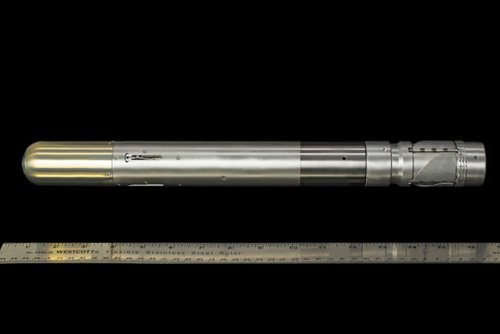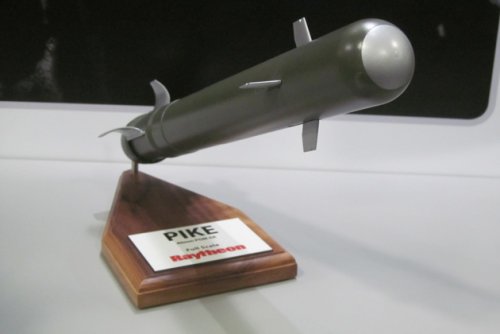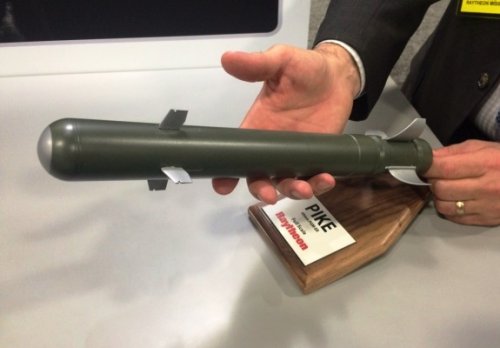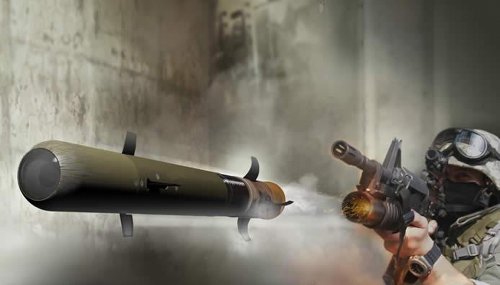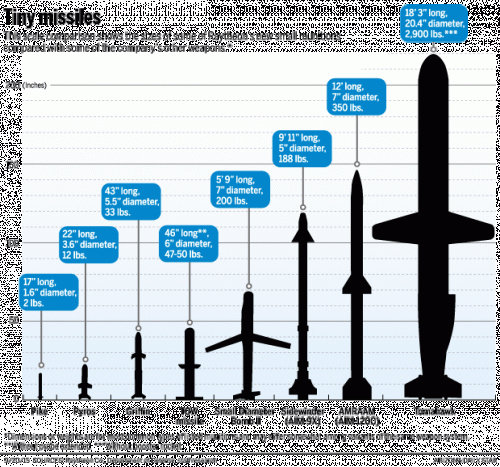eshelon
unconventional solutions
- Joined
- 11 July 2012
- Messages
- 98
- Reaction score
- 113
http://www.raytheon.com/news/feature/guided_weapons.html
"Miniaturized weapons not only require microscopic electronics, but something to protect them from the crushing G-forces that their launchers create. Raytheon's engineers have made advances on both fronts: The company's laser-guided Pike™ munition is nearly as narrow as some large-caliber ammunition, while the microelectronics in Raytheon's Excalibur artillery shell can withstand bullet-like acceleration – 0 to 760 mph in a fraction of a second.
“We’ve come really far. Now we have, basically, smart munitions you can hold in the palm of your hand,” said Frank Antenori, a former U.S. Army Special Forces soldier who now manages the Pike program for Raytheon Missile Systems.
Smaller circuit cards and better shock protection for electronics made guidance feasible for precision mortars and artillery shells. Now, miniaturized guided weapons – rockets, artillery, GPS-guided mortars, radar-seeking and anti-armor weapons – are likely to become a major part of ground warfare, U.S. Deputy Defense Secretary Bob Work said in a recent speech at the U.S. Army War College in Pennsylvania.
“We're not too far away from guided .50-caliber rounds,” Work said.
Raytheon's Pike weapon measures 40 mm in diameter, only a half-inch smaller than the 25 mm rounds fired by some military machine guns like those in the F-35 fighter jet and the M2 Bradley Fighting Vehicle. Soldiers can fire the two-pound, foot-and-a-half long Pike munition from a rifle-mounted grenade launcher.
The benefit for ground troops: A lightweight precision weapon that doesn't tether them to a vehicle launcher. Using a laser designator that resembles a pistol, one soldier points at a target such as a light enemy vehicle, while another fires the munition. The goal, as with all precision weaponry, is to save innocent lives.
“When you have the capability to send something a mile and a half and hit within five yards or less of a bad guy, you are achieving what our troops have always wanted – take out a specific target and minimize collateral damage," Antenori said.
The Pike munition contains a rocket engine, which accelerates more slowly than a bullet or artillery shell. But engineers are also building guidance systems that can withstand the more jarring acceleration of those weapons."
Summary:
diameter: (only) 40 mm
weight: 0,9 kg
length: 0,46 m
guidance: semi-active laser
range: 2,4? km
- - - -
Pike is similar to "The Sniper" precision ammunition concept from MBDA Concept Vision CVS101 (40 mm, 900 gram, 38 centimeters, 1500 meters)
"Miniaturized weapons not only require microscopic electronics, but something to protect them from the crushing G-forces that their launchers create. Raytheon's engineers have made advances on both fronts: The company's laser-guided Pike™ munition is nearly as narrow as some large-caliber ammunition, while the microelectronics in Raytheon's Excalibur artillery shell can withstand bullet-like acceleration – 0 to 760 mph in a fraction of a second.
“We’ve come really far. Now we have, basically, smart munitions you can hold in the palm of your hand,” said Frank Antenori, a former U.S. Army Special Forces soldier who now manages the Pike program for Raytheon Missile Systems.
Smaller circuit cards and better shock protection for electronics made guidance feasible for precision mortars and artillery shells. Now, miniaturized guided weapons – rockets, artillery, GPS-guided mortars, radar-seeking and anti-armor weapons – are likely to become a major part of ground warfare, U.S. Deputy Defense Secretary Bob Work said in a recent speech at the U.S. Army War College in Pennsylvania.
“We're not too far away from guided .50-caliber rounds,” Work said.
Raytheon's Pike weapon measures 40 mm in diameter, only a half-inch smaller than the 25 mm rounds fired by some military machine guns like those in the F-35 fighter jet and the M2 Bradley Fighting Vehicle. Soldiers can fire the two-pound, foot-and-a-half long Pike munition from a rifle-mounted grenade launcher.
The benefit for ground troops: A lightweight precision weapon that doesn't tether them to a vehicle launcher. Using a laser designator that resembles a pistol, one soldier points at a target such as a light enemy vehicle, while another fires the munition. The goal, as with all precision weaponry, is to save innocent lives.
“When you have the capability to send something a mile and a half and hit within five yards or less of a bad guy, you are achieving what our troops have always wanted – take out a specific target and minimize collateral damage," Antenori said.
The Pike munition contains a rocket engine, which accelerates more slowly than a bullet or artillery shell. But engineers are also building guidance systems that can withstand the more jarring acceleration of those weapons."
Summary:
diameter: (only) 40 mm
weight: 0,9 kg
length: 0,46 m
guidance: semi-active laser
range: 2,4? km
- - - -
Pike is similar to "The Sniper" precision ammunition concept from MBDA Concept Vision CVS101 (40 mm, 900 gram, 38 centimeters, 1500 meters)

